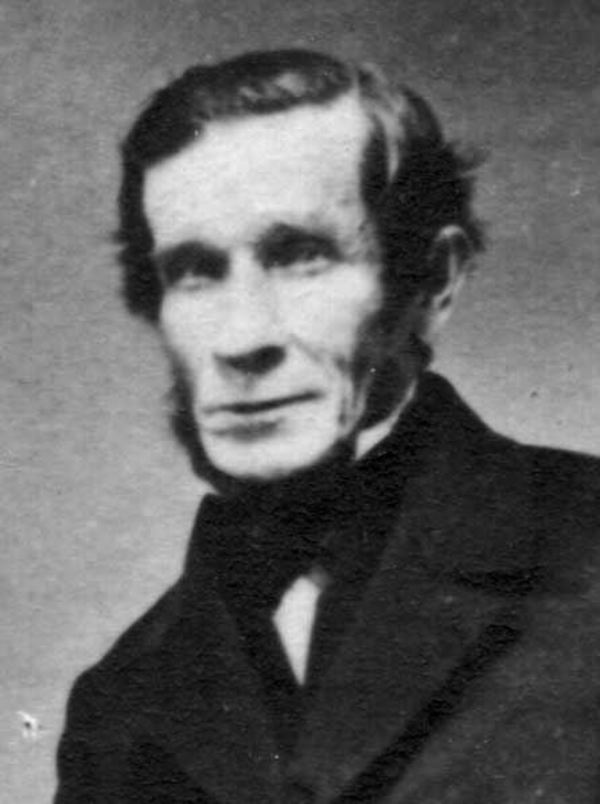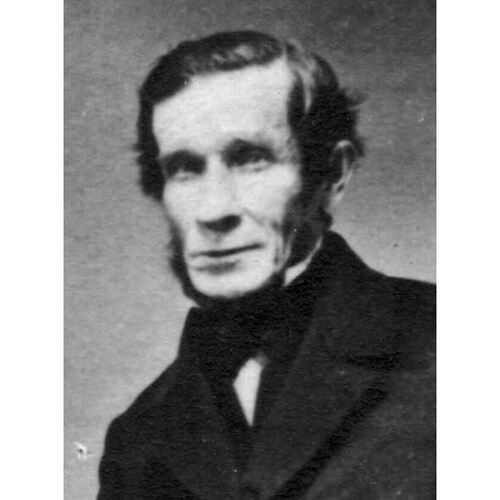
Source: Link
GLADMAN, GEORGE, fur-trader and explorer; b. 23 June 1800 at New Brunswick House, an HBC post on Brunswick Lake (Ont.), son of the fur-trader George Gladman and of an Indian woman; d. 24 Sept. 1863 at Port Hope, Canada West.
George Gladman entered the service of the Hudson’s Bay Company in 1814 under his father at Eastmain House. He served as clerk at Moose Factory from 1819 to 1834, and, after a year’s furlough in England, at Cumberland House in 1835–36. Promoted chief trader in 1836, Gladman was at York Factory and Norway House (1836–41), Upper Fort Garry (1841), and Oxford House (1842–45). While in the northwest he married, probably in 1837, Harriet, daughter of Thomas Vincent* of the HBC, who was the abandoned wife of R. D. Stewart of the same company; they were to have six children. After 31 years in the HBC service Gladman retired in 1845 to settle at Port Hope. Here he opened a store, which did not prosper, and his health also gave him trouble. In 1849 he re-entered the company’s service at the King’s Posts on the lower St Lawrence at Tadoussac, but resigned again in 1853 to return to Port Hope.
Gladman’s retirement was, however, interrupted by his being chosen leader of the Canadian exploring expedition to Red River in 1857. The parliamentary inquiry by a select committee of the British House of Commons in February and March of 1857 into the petition of the HBC for renewal of its licence had added to the interest already awakened in Canada in the future of British northwest America. Indeed merchants of Toronto and Hamilton wished to share, or take over, the trade of St Paul (Minn.) with Red River, and farmers in Canada West saw it as a region which might afford new farm lands.
On 11 May 1857 the Legislative Assembly of the Province of Canada also appointed a select committee, to inquire into the agricultural possibilities of the northwest. This committee heard witnesses, and as was natural in view of his experience and accessibility, Gladman was one. The committee’s recommendation that an expedition be sent to explore the route to Red River and the area’s agricultural prospects was acted on by the government on 18 July. Gladman was appointed head of the expedition, on which he was accompanied by his son Henry and by Simon James Dawson*, engineer, and Henry Youle Hind*, geologist and naturalist; Dawson and Hind had special instructions. The expedition left Toronto on 23 July 1857, and its organization was therefore hurried. Its instructions proved to be unclear: Gladman was to lead the expedition to Red River, but Dawson and Hind were expected to make observations along the way. There was thus some difference of purpose, and probably in consequence Gladman went on ahead of the other parties to Fort Frances, on Rainy Lake, to secure canoemen and then on to Red River to make preparations for the arrival of the others. All might have been well had he indeed made adequate provision in the settlement for the oncoming party, most of whom were to work and winter there. By his own report he did, but Hind and other members were dissatisfied, and relations between Gladman on the one hand and Hind and Dawson on the other grew strained.
Dawson was to remain at Red River during the winter of 1857–58, but Hind and Gladman both returned to Toronto, the latter arriving in September. Hind set about writing his report of the 1857 expedition and making plans for a similar expedition in 1858 to go as far as the Saskatchewan River. It was at first assumed that Gladman would lead it. But to the complaints already sent to the provincial secretary from Red River by Hind and Dawson, Hind now added a formal list of eight objections against Gladman ranging from his alleged refusal to give Hind a light canoe for explorations on the way to Red River to failure to make adequate arrangements for the arrival of the Hind and Dawson parties there. Gladman, in his replies to the criticism made of his work, responded amiably to the chief commissioner of crown lands, Philip Michael Matthew Scott VanKoughnet, and to the provincial secretary, Thomas-Jean-Jacques Loranger*, and made no countercharges. His defence was that he could not be held wholly responsible for the conduct of the expedition as the instructions had not put him fully in charge and it had in fact been given three leaders.
He accepted quietly the government’s decision not to use his services again and cheerfully resumed his retirement. He returned to Port Hope where he died in 1863.
PAC, RG 5, C1, 523, 543. Can., Prov. of, Crown Lands Dept., Report on the exploration of the country between Lake Superior and the Red River Settlement (Toronto, 1858), 185. G.B., Parl., House of Commons paper, 1857, Report from the select committee on the HBC. Mactavish, Letters of Letitia Hargrave (MacLeod). W. L. Morton, Henry Youle Hind: explorer, geologist, promoter (Toronto, 1976). L. H. Thomas, “The Hind and Dawson expeditions, 1857–58,” Beaver, outfit 289 (winter 1958), 39–45.
Cite This Article
W. L. Morton, “GLADMAN, GEORGE,” in Dictionary of Canadian Biography, vol. 9, University of Toronto/Université Laval, 2003–, accessed April 6, 2025, https://www.biographi.ca/en/bio/gladman_george_9E.html.
The citation above shows the format for footnotes and endnotes according to the Chicago manual of style (16th edition). Information to be used in other citation formats:
| Permalink: | https://www.biographi.ca/en/bio/gladman_george_9E.html |
| Author of Article: | W. L. Morton |
| Title of Article: | GLADMAN, GEORGE |
| Publication Name: | Dictionary of Canadian Biography, vol. 9 |
| Publisher: | University of Toronto/Université Laval |
| Year of revision: | 1976 |
| Access Date: | April 6, 2025 |



